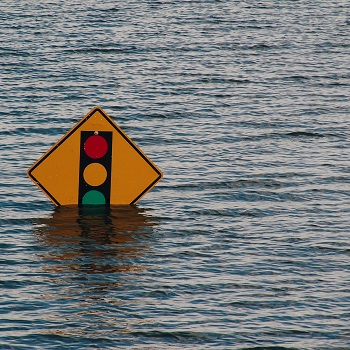New Age of the Train in the Winter Snow
See amid the winter snow! For the second year running Eurostar services from London to Paris and Brussels have been hit by the weather. This time last year freezing snow in the drive motors stopped the trains for three days; this year thousands of frozen passengers have been queuing at the Gare du Nord and in London, spilling out of St Pancras station and tailing back for half a kilometre in a thoroughly British queue as services were cut back by 25 per cent.
It’s very hard on all those frustrated travellers, many of them refugees from grounded airlines, but it also shows just how pan-European travel has expanded. The Eurostar is expected to carry 10 million or more passengers this year, and there are big projects right across Europe to introduce new high speed services. The euro crisis may threaten the political integrity of the EU, but we Europeans are not losing our passion for travel to each other’s places.
We’re on the brink of a new phase in the development of high speed rail. The rail liberalisation package which came into effect at the beginning of 2010 is beginning to open up the market, with Deutsche Bahn bringing its high speed ICE3 train through the Channel Tunnel to London in October and announcing 330 kph services between London, Amsterdam, Cologne and Frankfurt for 2013. Eurostar is looking at services to German and Dutch destinations and Italy’s NTV is planning a high speed service between Rome and Turin.
Spain has just opened a new 400km line between Madrid and Valencia and now has more than 2,000km of high speed track – even more than France.
The liberalisation process has already had significant knock-on effects for European industry. Alstom could scarcely believe it when Siemens won the contract to supply 10 new train sets for Eurostar’s modernisation project, for delivery in 2013. After all, Eurostar is 55 per cent owned by SNCF, which has always bought its rolling stock from Alstom. The French company has already failed to secure an injunction in a British court against the decision and now has a formal complaint with the European Commission over Eurostar’s handling of the bid.
The German train can carry 900 passengers and has its motors under the carriage floor rather than in locomotive units at the front and back of the train. Eurostar argues that this equipment will better meet its requirements and that it conforms with new safety regulations agreed earlier this year. Two SNCF directors on the Eurostar board resigned when the decision was announced.
The stakes are high for the train makers. The world is entering a new Age of the Train. Investment of $11bn is forecast world-wide. The United States, Latin America and the Middle East are all potential markets for high speed equipment. But the competition is fierce. China is apparently designing trains capable of 450 kph and envisages services across Asia and Europe which would speed passengers from Shanghai to London in two days. There is certainly a lot to play for. Lets hope it doesn’t snow too much!
Find Out More
-
Why Europe needs a water resilience strategy
February 8, 2024
-
Why the EU can’t risk failure at COP27
November 4, 2022


